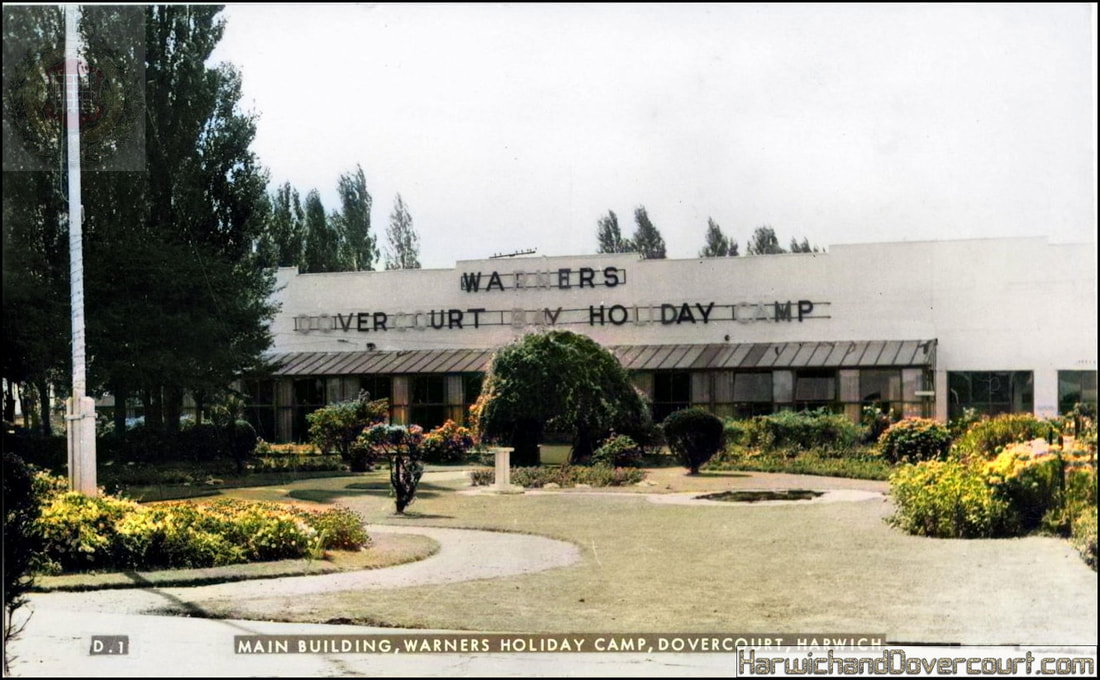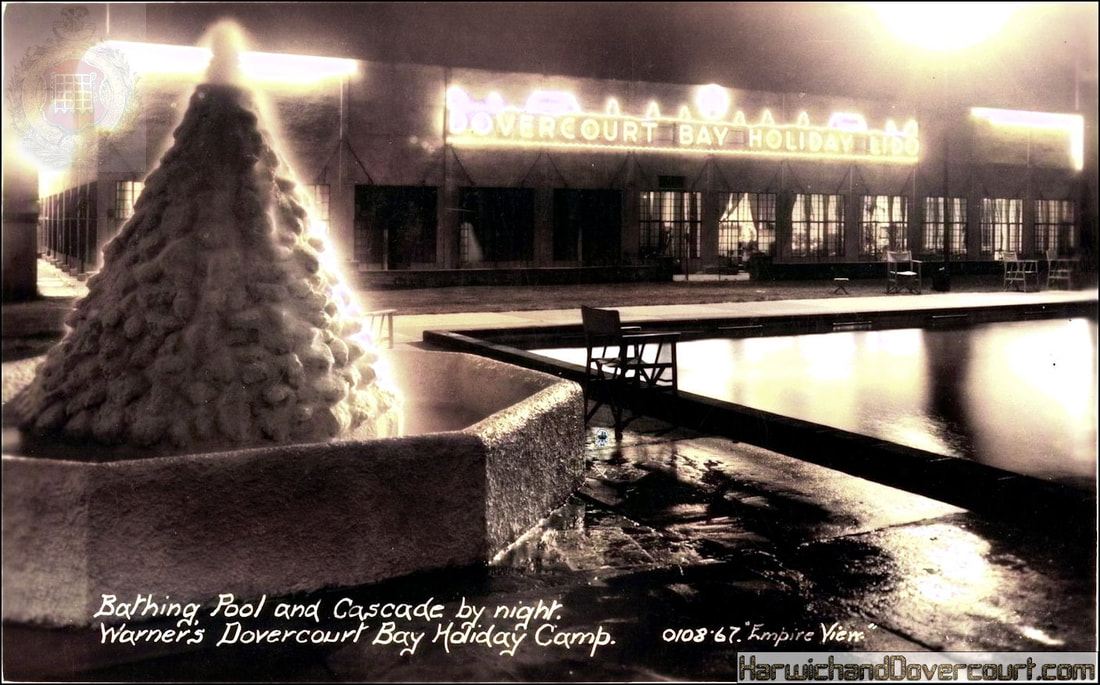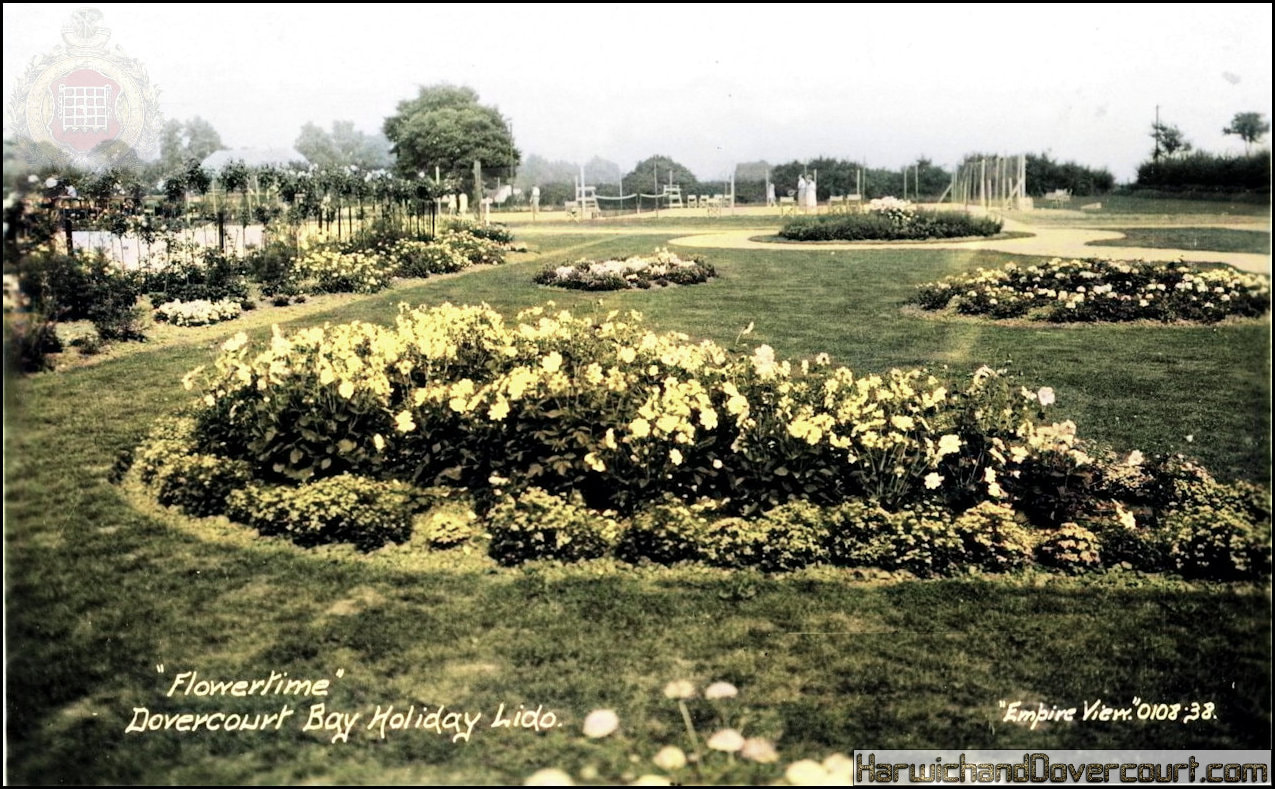Warner's Holiday Park
The Dovercourt Bay Holiday Lido was originally constructed in 1937, on 40 acres of land purchased by Harwich Borough and leased to the management of the Lido. A further 18 acres of land was also purchased to create football, cricket and rugby club playing fields.
The camp itself was created on plans by architect Harold Ridley Hooper, who had earlier drawn up the plans for the Butlins camp at Skegness, Harold was an architect based in Suffolk who also designed the Electric Palace at Harwich among many other plans and projects.
The newly constructed Holiday camp was officially opened by the Mayor of Harwich Mr C Hills a few months later in 1937 at a cost of £50,000. The camp provided accommodation for 1,500 guests, with facilities included dining room, bars, ballroom, swimming pool, bowling, putting, tennis, children’s areas, boating lake and sports facilities.
It is believed by many, that the camp had been constructed by Billy Butlin and operated as a Butlin's camp for the 1937–1938 season, but closed in the summer of 1938, at the same time the Clacton Butlin’s camp opened.
In the winter of 1938, the camp at Dovercourt was requisitioned by the government for housing children evacuated from Germany by the “Kindertransport” programme. It was also noted that from recollections of the refugees, they also suggest that by December 1938 the camp was being run by Harry Warner, whose company Butlin was on the board at around the same time Butlin's advertised Dovercourt as "associated with Butlin's" and into the early 1940s Butlin was putting on rail packages with the London and North Eastern Railway (LNER) to the Dovercourt camp.
When the Second World War started in September 1939, the camp was requisitioned again to accommodate military personnel until 1945. Post WW2 and the allied victory, the camp was in a poor state and required many repairs and maintenance, to get it back to pre-war condition. However, on the 1st of June 1946 Warner’s holiday camp reopened for the summer season.
The camp itself was created on plans by architect Harold Ridley Hooper, who had earlier drawn up the plans for the Butlins camp at Skegness, Harold was an architect based in Suffolk who also designed the Electric Palace at Harwich among many other plans and projects.
The newly constructed Holiday camp was officially opened by the Mayor of Harwich Mr C Hills a few months later in 1937 at a cost of £50,000. The camp provided accommodation for 1,500 guests, with facilities included dining room, bars, ballroom, swimming pool, bowling, putting, tennis, children’s areas, boating lake and sports facilities.
It is believed by many, that the camp had been constructed by Billy Butlin and operated as a Butlin's camp for the 1937–1938 season, but closed in the summer of 1938, at the same time the Clacton Butlin’s camp opened.
In the winter of 1938, the camp at Dovercourt was requisitioned by the government for housing children evacuated from Germany by the “Kindertransport” programme. It was also noted that from recollections of the refugees, they also suggest that by December 1938 the camp was being run by Harry Warner, whose company Butlin was on the board at around the same time Butlin's advertised Dovercourt as "associated with Butlin's" and into the early 1940s Butlin was putting on rail packages with the London and North Eastern Railway (LNER) to the Dovercourt camp.
When the Second World War started in September 1939, the camp was requisitioned again to accommodate military personnel until 1945. Post WW2 and the allied victory, the camp was in a poor state and required many repairs and maintenance, to get it back to pre-war condition. However, on the 1st of June 1946 Warner’s holiday camp reopened for the summer season.











